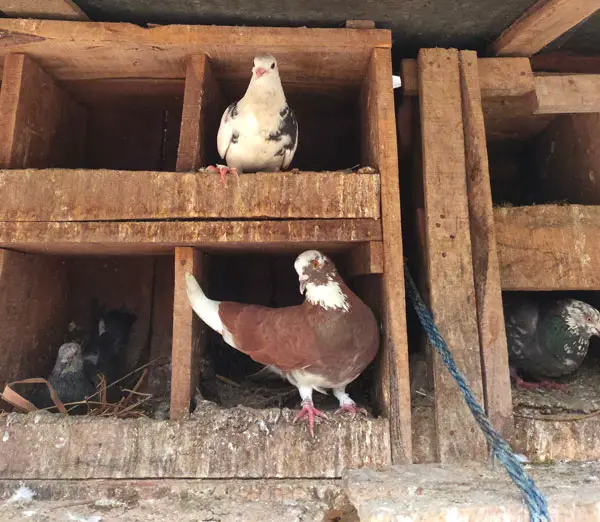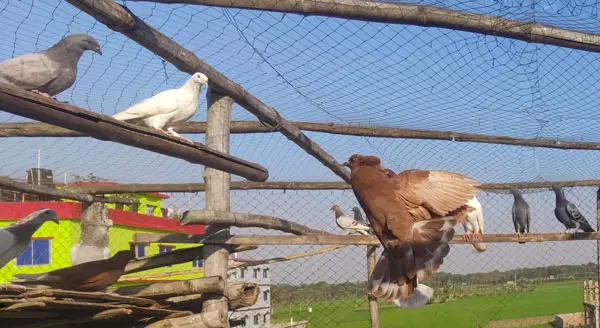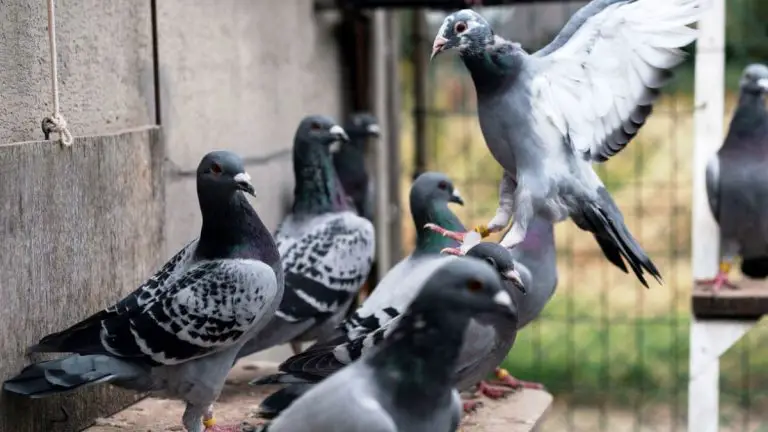Healthy Pigeon Poop: How to Identify Normal Pigeon Droppings?
Pigeons are commonly found in urban areas, and their droppings can significantly impact the environment and public health. Understanding what constitutes normal pigeon droppings is crucial for proper health and safety measures.
So, what is healthy pigeon poop: how do you identify normal pigeon droppings? Healthy pigeons or normal pigeon poop should be uniform and smooth, without any clumps or lumps. Their droppings usually have a moist consistency and are approximately 1 inch long and ¼ inch in diameter. The droppings are made up of uric acid, feces, and undigested food particles.
Read on to gain a deeper understanding of what normal pigeon droppings look like. Also learn what factors affect their appearance, and how to spot any abnormalities.
Characteristics of Healthy Pigeon Poop: How to Identify Normal Pigeon Droppings?
When it comes to identifying normal pigeon droppings, there are three key characteristics to look for:
- Color
- Consistency
- Size and shape
Let’s delve into each of these characteristics in a bit more detail.

1. Color
Normal or healthy pigeon droppings are typically uniform in color and can range from dark to light green or white. The droppings’ color largely depends on the pigeon’s diet, which primarily consists of seeds, grains, and other vegetation.
If you notice a sudden change in the color of the droppings, this may indicate a change in diet or a health issue.
2. Consistency
Consistency is a crucial aspect of normal pigeon droppings. Healthy pigeon droppings should have a moist, semi-solid texture and not be too runny or hard. The droppings should be uniform and smooth, without any clumps or lumps.
If you notice a change in the consistency of your pigeon’s droppings, it may indicate a health problem, and it’s best to have your pigeon evaluated by a veterinarian.
3. Size and Shape
Pigeon droppings are typically small, and the shape can vary depending on the pigeon’s posture and health.
However, droppings should be uniform and consistent in shape, without any deformities or abnormalities. So, changes in the size or shape of your pigeon’s droppings indicate a health problem.
Factors that Affect Pigeon Droppings
There are several factors that can affect the appearance and characteristics of pigeon droppings. Let’s explore these factors in greater detail and how they impact pigeon droppings.

Diet
What a pigeon eats can significantly impact the appearance and characteristics of its droppings. A healthy, balanced diet will result in normal, uniform droppings, while an imbalanced diet can lead to changes in color, consistency, and shape.
For example, a diet high in green vegetables can result in lighter-colored droppings, while a diet high in protein can result in darker droppings. It’s important to provide your pigeons with a balanced diet that includes a variety of foods to ensure their health and well-being.
Age
Age is another factor that can impact pigeon droppings. Young pigeons typically have softer, runnier droppings compared to adult pigeons, which have firmer, semi-solid droppings.
As pigeons age, their digestive system becomes more efficient, and their droppings become more uniform and consistent in appearance.

Age-related changes in pigeon droppings are normal, but if you notice any sudden changes, they may indicate an underlying health issue. It’s best to consult a veterinarian.
Health
Health is a crucial factor that affects pigeon droppings. Health problems can result in changes in the appearance and characteristics of pigeon droppings, such as changes in color, consistency, and shape.
For example-
- If your pigeon suffers from an infection, its droppings may become runny and foul.
- If your pigeon is experiencing digestive problems, its droppings may become clumpy or irregular in shape.
If you notice any changes in your pigeon’s droppings, it’s important to have your pigeon evaluated by a veterinarian as soon as possible.
Environment
The type of environment in which pigeons live can significantly affect the amount and consistency of their droppings. For example, pigeons that live in unsanitary environments may produce more droppings due to stress and lack of open space.
This can create a cycle where the accumulation of droppings creates even more unsanitary conditions, leading to even more droppings being produced.
On the other hand, pigeons living in clean, well-maintained environments with plenty of open space may produce fewer droppings and have more solid and less watery droppings. This is because they are generally less stressed and healthier, which results in more efficient digestion and less waste production.
How to Spot Abnormal Pigeon Droppings?
While normal pigeon droppings are uniform in color, consistency, and shape, there are several signs of abnormal droppings that you should look out for. Let us explore three key indicators of abnormal pigeon droppings.

1. Changes in Color
Normal or healthy pigeon droppings range from dark to light green or white. If you notice a very bright or unusual shade of green, this could indicate an issue with the bird’s diet or digestive system.
2. Abnormal Consistency
Normal pigeon droppings are semi-solid and uniform in consistency, but if you notice any changes, such as runny or watery droppings, it may indicate an issue with your pigeon.
3. Presence of Blood or Mucus
The presence of blood or mucus in pigeon droppings indicates a potential health problem.
Blood in pigeon droppings may indicate an injury or a digestive issue, while the presence of mucus may indicate an infection. If you notice blood or mucus in your pigeon’s droppings, it’s important to seek veterinary assistance immediately.

4. Texture
Healthy pigeon droppings should have a smooth surface, without any lumps or bumps. If the droppings have a gritty texture or contain solid material, such as undigested food, it could be a sign of a health problem.
5. Odor
Healthy pigeon droppings have a mild, earthy odor. If the droppings have a strong, foul odor, it could be a sign of a health problem.
6. Quantity
Pigeons produce a lot of droppings, but an abnormal increase in droppings could indicate a health problem. If you notice an unusually high number of droppings in one area, it could be a sign of a health problem with your pigeon.
If you’re interested in learning more about pigeon health and breeds, you might find our articles on pigeon yellow poop and roller pigeon breeds informative. Our article on pigeon yellow poop provides insights into the potential health issues associated with this type of droppings, while our article on roller pigeon breeds explores the unique characteristics and history of these fascinating birds. Check out these articles to learn more about the diverse world of pigeons and how to keep your birds healthy and thriving.FAQs
Here are some of the frequently asked questions for further clarification on the topic.
Normal pigeon droppings are dark in color and have a uniform texture. They are not watery or runny.
It could be due to a dietary issue, such as the pigeon drinking too much water or not enough fiber in its diet. It could also be a symptom of an underlying health issue, such as a bacterial or viral infection.
Pigeons typically produce droppings several times daily, depending on their activity level. They may produce more droppings when eating or drinking large amounts of water.
On average, pigeons drop 1 to 4 times every hour.
Wrapping Up
Pigeon droppings are a critical aspect of pigeon health, and pigeon owners must understand what normal droppings look like. Regular monitoring of pigeon droppings is an essential part of pigeon care. Thus, you can ensure that your pigeons remain healthy and happy.
Following the tips outlined in this article, you can quickly identify normal pigeon droppings and help keep your pigeons healthy. Don’t hesitate to seek veterinary assistance if you have concerns about your pigeon’s droppings or overall health.






